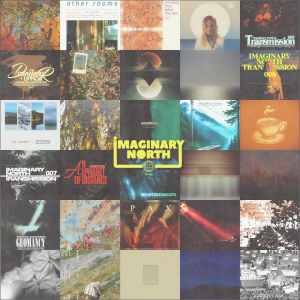 (03.21.09) [Ref.: ARL 2008 Top 10]
(03.21.09) [Ref.: ARL 2008 Top 10]
What follows is a guide for the igloo-visitor, rewind-replaying releases that struck as 2008’s best. The eye is here on music of predominantly ambient (Beatless 10) and techno (Beaty 10) colours, these being among the most compelling current electronic genres. These are musical guests that have endured where others have been ephemeral. Rather than zooming in on individual tracks, the focus here is on snapshots of whole works.
Beatless 10 ::
 Black Sea (Touch) found our pioneering laptop-toting axeman picking up threads left dangling from Venice and tucking them into micro-symphonies of altered guitar states. Judiciously combining the usual DSP ravagings, but here with a surgeon’s touch, Fennesz quests into more ambient and quasi-classical domains, turning from the desertified terrain of deconstruction for the call of re-construction. A hint of improv and a pinch of post-rock help forge newly arresting texture flows. Raw rubs up against Cooked. Buried melodies slowly seep and colours fly through white spume. Soundwalls rise steepling to quasi-orchestral crescendo, then break to resonant whisper. Effervescent quiescence. [Purchase
Black Sea (Touch) found our pioneering laptop-toting axeman picking up threads left dangling from Venice and tucking them into micro-symphonies of altered guitar states. Judiciously combining the usual DSP ravagings, but here with a surgeon’s touch, Fennesz quests into more ambient and quasi-classical domains, turning from the desertified terrain of deconstruction for the call of re-construction. A hint of improv and a pinch of post-rock help forge newly arresting texture flows. Raw rubs up against Cooked. Buried melodies slowly seep and colours fly through white spume. Soundwalls rise steepling to quasi-orchestral crescendo, then break to resonant whisper. Effervescent quiescence. [Purchase]
Patrick Benolkin’s choreography of retreat was one of the standouts of a year in which ambient continued a mini-resurgence after years in the doldrums. Infraction’s curation seemed to bring out Eluder’s true textural colours, and once wan washes and dim-lit drones are imbued with more depth and detail in The Most Beautiful Blue (Infraction). Sub-lit harmony and particulate shimmer commingle with field-effluvia. A patina of gruzz and fizz, an under-shadow of nocturnal nature-hum, a grain of bristling richness, make more of Eluder’s translucent tones. A submarine dreamscene. [Purchase]
 For an album based entirely on real-time processed shortwave radio signals, Radioland (Die Schachtel) was a surprisingly lush-carpeted landscape. A humanist among abstract digitalism’s machinists, Stephan Mathieu dissolves the academic – a meditation on information – in the metaphysical of oceanism, transforming inarticulate frequencies into eloquent movements. Feel the awe at a simple trail of tonefloat crossing a drone moving in the opposite direction coming shimmeringly alive with harmonic overtone. Inveterate Mathieu-watchers will know what to expect. It’s Drone, Jim, but not as we know it. Articulate particulate. [Purchase]
For an album based entirely on real-time processed shortwave radio signals, Radioland (Die Schachtel) was a surprisingly lush-carpeted landscape. A humanist among abstract digitalism’s machinists, Stephan Mathieu dissolves the academic – a meditation on information – in the metaphysical of oceanism, transforming inarticulate frequencies into eloquent movements. Feel the awe at a simple trail of tonefloat crossing a drone moving in the opposite direction coming shimmeringly alive with harmonic overtone. Inveterate Mathieu-watchers will know what to expect. It’s Drone, Jim, but not as we know it. Articulate particulate. [Purchase]
Christopher Bissonnette seriously altered fragments of neo-classical states into glassine tone-baths on In Between Words (Kranky), developing the blueprint of his debut, Periphery, into deeper-grained terrain. Smooth drones are delicately ambushed, loop-lassoed, and pressed into controlled glitch-fuzz implosions. String sections are shrunk to mute hummings, while captured melodic interstices are whipped into fluffy digi-clouds, trailing soft noise haloes and static streamers. Like the ghost of Kranky’s space-drone in the soft machine of 12k-style electronica. Gorgeous forging. [Purchase / Listen]
 Celer’s string-driven texturalism was seen at its best on Discourses of the Withered (Infraction). Timbral obsessives, prolific duo Will and Dani, operating within a deliberately narrow dynamic, unveiled an elegant slab (no oxymoron here) of slow-core micro-symphonics, its recursions seemingly mirroring the mindfulness of breath in its inhale-exhale sequences. Given oceanic, aetherial, and chthonic expression, their songlines sprawl languorously within their chosen ambit. Field infusions and dark matter below serve to keep the ear uncloyed, the whole repaying deep listening practices. Furred dirge surgery. [Purchase]
Celer’s string-driven texturalism was seen at its best on Discourses of the Withered (Infraction). Timbral obsessives, prolific duo Will and Dani, operating within a deliberately narrow dynamic, unveiled an elegant slab (no oxymoron here) of slow-core micro-symphonics, its recursions seemingly mirroring the mindfulness of breath in its inhale-exhale sequences. Given oceanic, aetherial, and chthonic expression, their songlines sprawl languorously within their chosen ambit. Field infusions and dark matter below serve to keep the ear uncloyed, the whole repaying deep listening practices. Furred dirge surgery. [Purchase]
What Paul Bradley doesn’t know about The Drone isn’t worth knowing. Having turned his eternal guitar away from sounding the earthy depths of post-industrial, Consumed (Twenty Hertz) further pursued a late tendency to the aetherial. Taking off from where Chroma and Sirens left off, its three movements variously explore a theme of endless shapeshifted guitar layers flecked with fibrillating field recordings. A double disc with image assist (DVDr + CDr), you get a series of saturated colourfields bleeding with liquid sunset, fibrillating with limpid light. Blimey! And that’s just the CDr. Mesmeric atmospheric. [Purchase]
 Fabio Orsi has perplexed as much as pleased with the volume of his output, but its quality proved convincing enough to justify the struggle to keep up. Audio for Lovers (Last Visible Dog) may not have been all-round his best, but should be standard issue for the Orsi-initiate, as Disc 2 re-presents three of the best (now OOP) 3″s that led adepts to hymn him. Admittedly, disc #1’s all new material doesn’t grip throughout like #2’s, but the whole finds ample fertile ground between minimalist loopism, post-rock sense and soundscape sensibility. A handy state of the art compendium of new age experimental ambient and noise-lite psych-drone. Immersive recursive. [Purchase]
Fabio Orsi has perplexed as much as pleased with the volume of his output, but its quality proved convincing enough to justify the struggle to keep up. Audio for Lovers (Last Visible Dog) may not have been all-round his best, but should be standard issue for the Orsi-initiate, as Disc 2 re-presents three of the best (now OOP) 3″s that led adepts to hymn him. Admittedly, disc #1’s all new material doesn’t grip throughout like #2’s, but the whole finds ample fertile ground between minimalist loopism, post-rock sense and soundscape sensibility. A handy state of the art compendium of new age experimental ambient and noise-lite psych-drone. Immersive recursive. [Purchase]
Andrew Reichel, aka Gel-Sol, called his IZ (Psychonavigation) “new directions in the orchestral ambient vein.” It’s apt, as the Seattle-based electronicist, already with a name for widescreen downtempo psychedelic ambient (n.b. not psybient), changed tack to curate a lush fusion of rich ambient pads and affecting melodic strands. Directions aren’t so much new as refreshed, here floating like Namlook out of TD, there swaying like a synthetic Hammock, or pushing the virtual SotL patch on his Korg. The overriding drift tends towards uplift, but ambivalent undercurrents keep things interestingly balanced between poignant and eerie. Chilled billows. [Purchase / Listen]
 Ambient guitar activist David Tagg’s third full-length Fundamentals of Orchid Biology (Second Sun) took forward the excellent work seen on Waist Deep Seas Of Milk, on which Tagg envisioned The Future of Modern Guitar, all trace of twang, pluck and strum dissolved in FX haze and spun out in endless echo returns. Tagg’s tones continue to take liberties with the ADSR envelope, abstaining from attack, denying decay, stretching sustain and release. He wafts out endles pillow-tone drone clouds for mercurial melodies to nestle in. A bit like a DIY indie-ambient koan. Beauteous quietude. [Purchase]
Ambient guitar activist David Tagg’s third full-length Fundamentals of Orchid Biology (Second Sun) took forward the excellent work seen on Waist Deep Seas Of Milk, on which Tagg envisioned The Future of Modern Guitar, all trace of twang, pluck and strum dissolved in FX haze and spun out in endless echo returns. Tagg’s tones continue to take liberties with the ADSR envelope, abstaining from attack, denying decay, stretching sustain and release. He wafts out endles pillow-tone drone clouds for mercurial melodies to nestle in. A bit like a DIY indie-ambient koan. Beauteous quietude. [Purchase]
On Fantasma-Parastasie (Alien8) Aidan Baker & Tim Hecker explored zones between pitched and unpitched (noise) tones. The presence of noise didn’t preclude a muffled melody or two, iron fist and velvet glove in tandem. Familiarity with solo Baker may help identify his contribution, but if you’re looking for Nadja, you’ve come to the wrong place. Hecker’s is the more prominent voice here, the aesthetic of ’08 shorties, Atlas and Norberg, evident in its noise’n’furls of static-savaged harmony. Baker’s presence registers more subtly in the form of heavier inputs to certain pieces. Hecker, in turn, offsets Baker’s doomier moments with flecks of fire and brimstone. Static fantastic. [Purchase / Listen]
Beaty 10 ::
 Why Can’t We Be Like Us (Hello? Repeat) was the most satisfyingly experimental of 2008’s techno. Beyond facile plugin-piddling and ProTool-fiddling, Bruno Pronsato clearly laboured mightily over compositional and rhythmic elements to create tracks that wriggle and writhe as much as shimmy and jack. In a blind taste test, the percussive intricacies might suggest a Villalobos or Luciano, but Pronsato packs more micro-punch, deeper space science and flexistentialist ideology to disorient and re-orient. More than mnml, it’s a deep-down-and-dirty head-funk. Ends aren’t deducible from beginnings, as Pronsato just says no to repetition nonsense, taking deviant turns to intelligent wig-outs on unfamiliar floors. [Purchase / Listen
Why Can’t We Be Like Us (Hello? Repeat) was the most satisfyingly experimental of 2008’s techno. Beyond facile plugin-piddling and ProTool-fiddling, Bruno Pronsato clearly laboured mightily over compositional and rhythmic elements to create tracks that wriggle and writhe as much as shimmy and jack. In a blind taste test, the percussive intricacies might suggest a Villalobos or Luciano, but Pronsato packs more micro-punch, deeper space science and flexistentialist ideology to disorient and re-orient. More than mnml, it’s a deep-down-and-dirty head-funk. Ends aren’t deducible from beginnings, as Pronsato just says no to repetition nonsense, taking deviant turns to intelligent wig-outs on unfamiliar floors. [Purchase / Listen]
The Sight Below’s ambient swirl and foggy 4/4 thump was a clear homage to Wolfgang Voigt’s Gas. Rafael Antonio Irisarra (for TSB is he) is open about the origins of his Glider (Ghostly), its title clearly referencing its other inspiring source, My Bloody Valentine. TSB’s pastiche is so artfully done, though, it rises above mere copyism. While his guitar gently weeps, strung out through an array of reverb, delay, and loop devices, a sound covering bases from the gauze of Jeff Pearce to the fuzz of Belong drips over the techno kicks. Shoegaze and Techno tropes conspire to queer The Field’s pitch. [Purchase / Listen]
 Olaf Bender’s stamp is writ large on the self-consciously cold, clinical blueprint of his label’s image, but Death of a Typographer (Raster-Noton) found his Byetone in warmer-blooded and more fleshy mood. He fattens up his prototype’s stick-figure kinetics and switches the melody:noise ratio. Sinewy synth threads are drawn from electro industrial-land into buzzing robo-callisthenics wrapped around a propulsive undercarriage. Bender’s bent remains structure-reductive, but DoaT sees a substantial and satisfying change in Byetone’s angle of attack. [Listen / Purchase
Olaf Bender’s stamp is writ large on the self-consciously cold, clinical blueprint of his label’s image, but Death of a Typographer (Raster-Noton) found his Byetone in warmer-blooded and more fleshy mood. He fattens up his prototype’s stick-figure kinetics and switches the melody:noise ratio. Sinewy synth threads are drawn from electro industrial-land into buzzing robo-callisthenics wrapped around a propulsive undercarriage. Bender’s bent remains structure-reductive, but DoaT sees a substantial and satisfying change in Byetone’s angle of attack. [Listen / Purchase]
Songs from the Beehive (Smallville) saw Move D + Benjamin Brunn purveying permutations of techno, house, and ambient, even sneaking in some drone and off-jazz. Brunn proves a boon as a foil for D’s moves. Tracks unhurriedly unfold, accrue momentum and wind out from hazy sample suspensions and audio-babble to take on discreetly jacking deep techno and house habits. Breakdowns expose micro-layers of thrumming frequencies. Soft keys steeped in ice-cool liquids take on multifunctional rhythmic, textural and melodic roles. Songs from the Beehive succeeds more than what was once tagged “ambient techno” in melding beat Earth and ambient Air. [Purchase / Listen]
 Half of DeepChord is half of Echospace is Intrusion is… well, more of the same, only different. With Steve Hitchell solo, The Coldest Season‘s chill wintry blast ceded to the spring warmth of The Seduction Of Silence (echospace [detroit]). Dub, ambient, and minimal techno touchstones are ever-present, with a stronger whiff of reggae (not just in old R&S sidekick Paul St. Hilaire’s guest spot). Soft-techno workouts, dips in warm vapor-baths, a surface similarity to the Echospace trip, but from within the echo-chords and analogue atmospherics emerges a kind of cool (not Cool) spirituality that sets it apart from colder kin. [Purchase / Listen
Half of DeepChord is half of Echospace is Intrusion is… well, more of the same, only different. With Steve Hitchell solo, The Coldest Season‘s chill wintry blast ceded to the spring warmth of The Seduction Of Silence (echospace [detroit]). Dub, ambient, and minimal techno touchstones are ever-present, with a stronger whiff of reggae (not just in old R&S sidekick Paul St. Hilaire’s guest spot). Soft-techno workouts, dips in warm vapor-baths, a surface similarity to the Echospace trip, but from within the echo-chords and analogue atmospherics emerges a kind of cool (not Cool) spirituality that sets it apart from colder kin. [Purchase / Listen]
Kangding Ray’s Automne Fold (Raster-Noton) went further in exploring his debut Stabil‘s organic-digital, bringing on the bowed guitars, violins, detuned piano, even vocals. Diverging from R-N orthodoxy, Letellier fleshes up its skeleton sound, as crisp digi-beats are transfused with flickering bursts. The sound is still scrubbed up and precise, but with more injections of human warmth. Production cleaves to a recognisable micro-rhythmic idiom, but a treatment-lite naturalism runs through it. Automne Fold loosens up the tightness of Raster’s erstwhile buttoned-up necktie, adding suppleness and colour to the stricture of its white starched collar. [Purchase / Listen]
 Jesse Somfay emerged as one of the less generic of upcoming tech-house producers. Not for him the herd mentality of minimal’s infernal internality; instead it’s all a-glaze with gloop and spangle, a-bubble with plasma-bass bumps. He may hi-jack the minimal vehicle now and then, but it gets a shoegaze-respray and FX-streaks to fuel its starburst sequences. Mention James Holden if you must, but please pipe down about Border Community. Somfay’s dream-tech feels more (un)real, his Schnauss-house Boards-ed up better, and, the odd pudding over-egging aside, Amaranthine Reverie (Archipel) is replete with intoxicating draughts. [Purchase / Listen
Jesse Somfay emerged as one of the less generic of upcoming tech-house producers. Not for him the herd mentality of minimal’s infernal internality; instead it’s all a-glaze with gloop and spangle, a-bubble with plasma-bass bumps. He may hi-jack the minimal vehicle now and then, but it gets a shoegaze-respray and FX-streaks to fuel its starburst sequences. Mention James Holden if you must, but please pipe down about Border Community. Somfay’s dream-tech feels more (un)real, his Schnauss-house Boards-ed up better, and, the odd pudding over-egging aside, Amaranthine Reverie (Archipel) is replete with intoxicating draughts. [Purchase / Listen]
The style Daniel Stefanik brought to the table on previous 12″s was amply evidence on the full-length Reactivity (Statik Entertainment). That said, it sees him wont to wander and flex a fluid sub-genre muscle around the edges of that crisp tech-house centre. It’s an expert exercise in dance-derived dub-style versatility, digging deep into a network of veins united by a certain loose-limbed downtempo vibe. Stefanik’s forays into the cracks between ambient house and chilled techno bear echoes of Theo Parrish, albeit filtered through a Chain Reaction lens, up close to Move D, but personal. [Purchase / Listen]
 Thousands of Thoughts (Quietus) pushed Sven Schienhammer’s Quantec further out for a series of dub-daubed (post-) techno soundscapes. Remembrances of Berlin past come in the pulse and cirrus trails of Fluxion and Porter Ricks, of Gas and Yagya, but the default 4/4 tech-pulse and hi-hat house-shimmy is often overridden to let an FX-steeped submarine ambiance have its head. Drone-tones drizzled with reverb and delay consort with globs of musicized molasses, dribbled thick and lava-like. The low-end kick brigade is solid as ever, but all the more effective for sparer deployment. [Listen]
Thousands of Thoughts (Quietus) pushed Sven Schienhammer’s Quantec further out for a series of dub-daubed (post-) techno soundscapes. Remembrances of Berlin past come in the pulse and cirrus trails of Fluxion and Porter Ricks, of Gas and Yagya, but the default 4/4 tech-pulse and hi-hat house-shimmy is often overridden to let an FX-steeped submarine ambiance have its head. Drone-tones drizzled with reverb and delay consort with globs of musicized molasses, dribbled thick and lava-like. The low-end kick brigade is solid as ever, but all the more effective for sparer deployment. [Listen]
Expanse (Shoreless) was a late December release from Grit that came just in time to tickle deep midwinter dub-techno fancies, perhaps grown jaded from 2008’s glut. There were decent contributions to a couple of genre-driven comps earlier in the year, but these didn’t prepare us for this strong set from out of the South London boroughs documented by Burial and here reflected in a differently genre-tweaked but similarly sullen set. The ingredients are familiar – mid-tempo beats, sub bass prods, spectral synth stabs and ghostly shades, but worth trying with Grit’s (recipe), nicely flavoured with smoky atmospherics. [Purchase]
All releases above are out now.
Essential Record Label Links ::






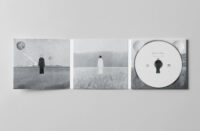
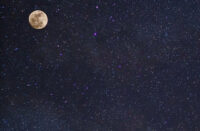
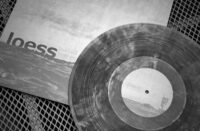

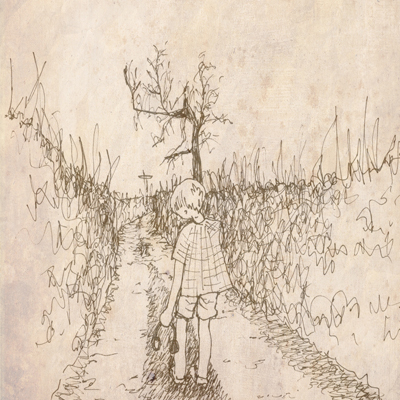







![Allmanna Town :: 1911 EP (Self Released) — [concise]](https://igloomag.com/wp/wp-content/uploads/2025/03/allmannatown-1911_feat2-75x75.jpg)


